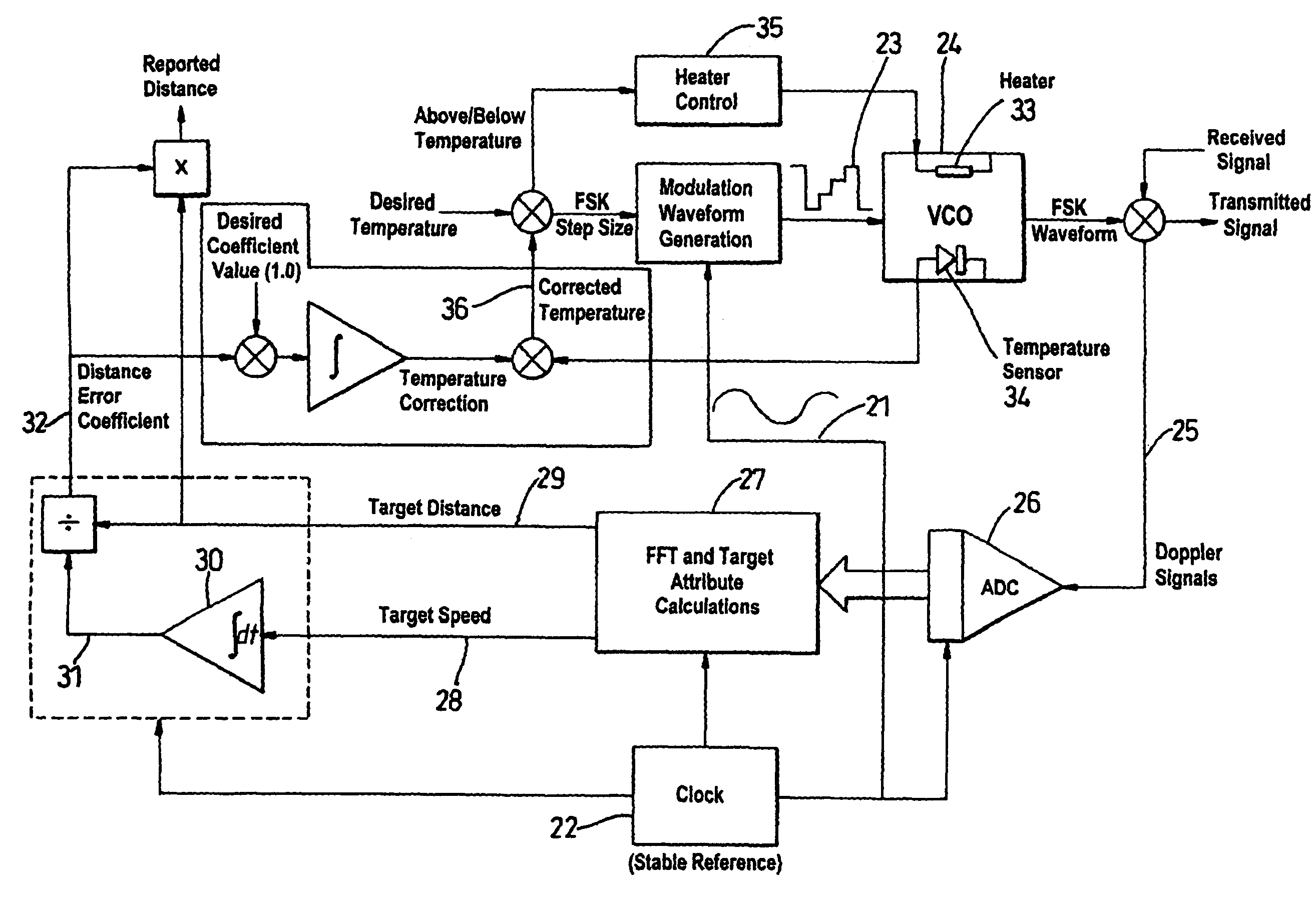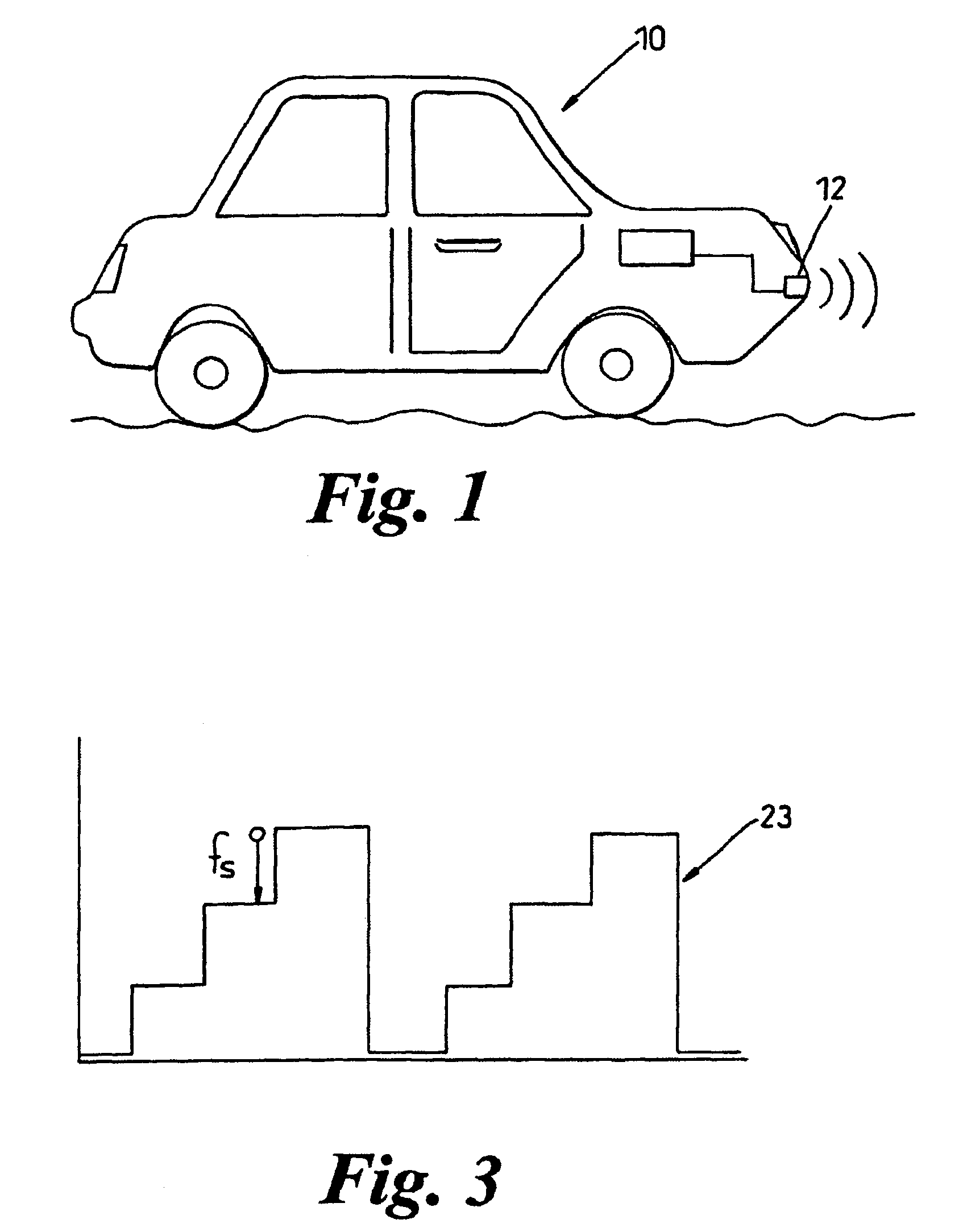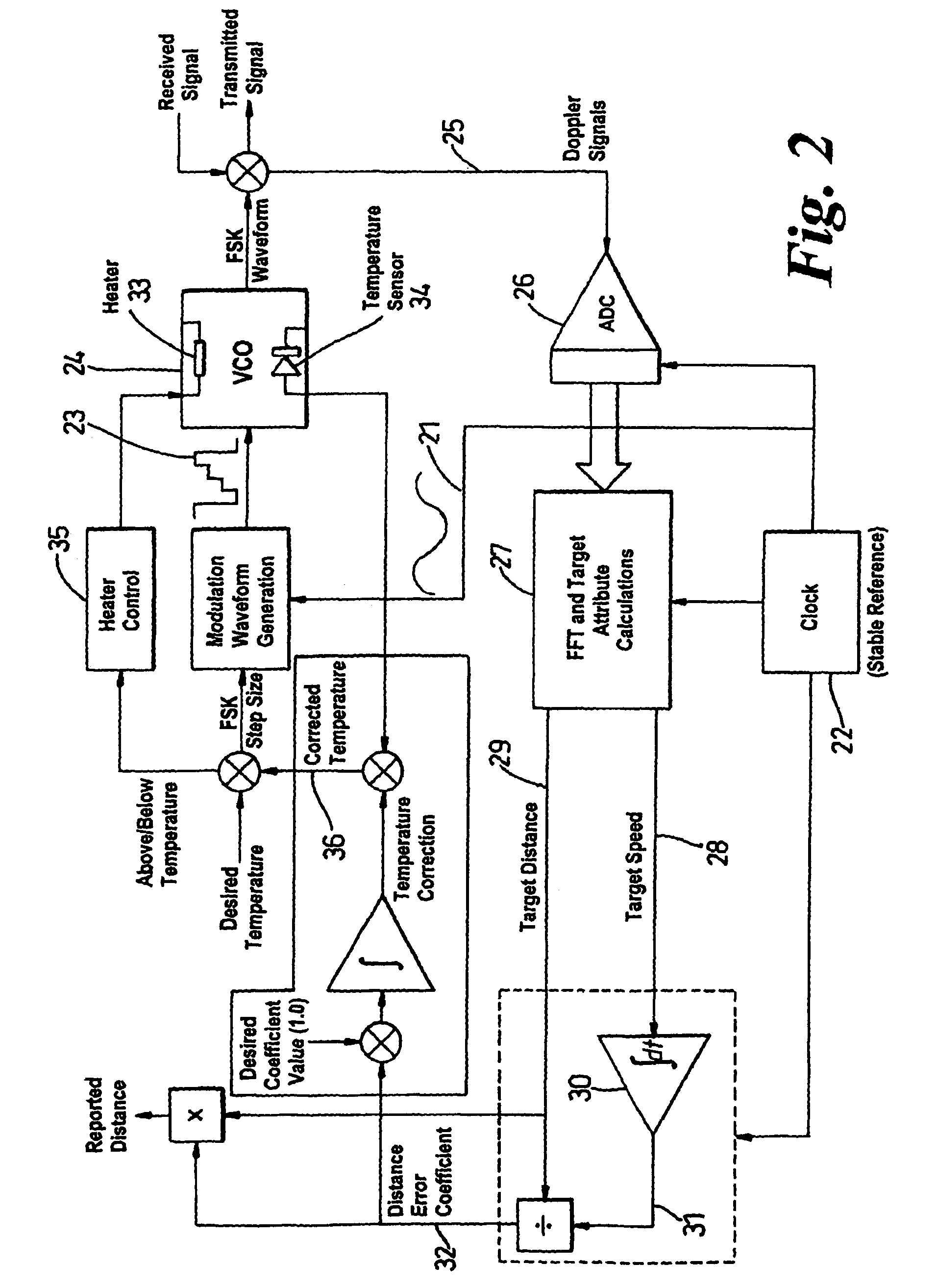Temperature compensation improvements in radar apparatus
a radar and temperature compensation technology, applied in the direction of reradiation, measurement devices, instruments, etc., can solve the problems of unsatisfactory performance and errors in the estimation of the distance of target vehicles
- Summary
- Abstract
- Description
- Claims
- Application Information
AI Technical Summary
Benefits of technology
Problems solved by technology
Method used
Image
Examples
Embodiment Construction
[0037]As shown in FIG. 1, a vehicle 10 is fitted with an example of a radar apparatus in accordance with the present invention. The apparatus comprises a combined microwave source and detector 12. These are mounted towards the front of the vehicle, perhaps at bumper level as shown, where there is a clear and unobstructed (in the microwave range of the spectrum) view ahead of the vehicle as it travels along a road. The source / detector are connected to a processor through a suitable electrical cable.
[0038]As shown in FIG. 2 of the accompanying drawings, the source is driven by a stable voltage controlled oscillator (VCO) 24 which is modulated by a drive signal 23. The drive signal is produced by a modulation voltage waveform generator that is synchronised by a clock 22. The difference in frequency of each of the frequency steps Fs produced by the changing voltage of the drive is known as the FSK step size. A typical drive signal 23, in which four steps are present, is shown in FIG. 3 ...
PUM
 Login to View More
Login to View More Abstract
Description
Claims
Application Information
 Login to View More
Login to View More - R&D
- Intellectual Property
- Life Sciences
- Materials
- Tech Scout
- Unparalleled Data Quality
- Higher Quality Content
- 60% Fewer Hallucinations
Browse by: Latest US Patents, China's latest patents, Technical Efficacy Thesaurus, Application Domain, Technology Topic, Popular Technical Reports.
© 2025 PatSnap. All rights reserved.Legal|Privacy policy|Modern Slavery Act Transparency Statement|Sitemap|About US| Contact US: help@patsnap.com



